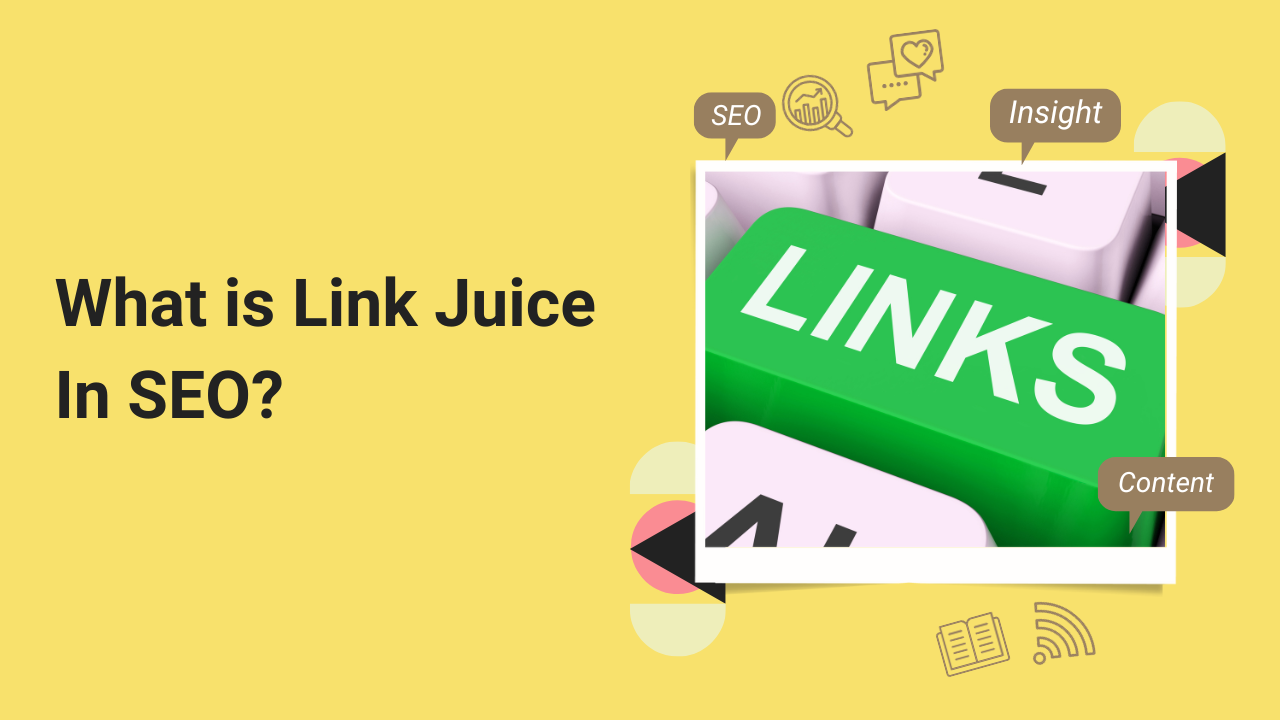
Table of Contents
This vernacular term, ‘link juice,’ carries substantial weight in the digital landscape. It represents the transfer of influence from one webpage to another through a hyperlinked connection, a dynamic that profoundly impacts a website’s credibility and ranking in search engine results.
When one website references another through a DoFollow link, it shares some positive attributes, such as PageRank and TrustRank. This action effectively serves as a recommendation in the eyes of search engines. The greater the link juice flow from the linking site to the linked site, the more authoritative and impactful this recommendation becomes.
Understanding Internal and External Link Juice SEO
- Regarding external link juice, we’re talking about the flow of linking influence from an outside source to a specific domain.
- When we discuss internal link juice, we highlight the dynamic where a website’s content strengthens the visibility and ranking of its other internal pages.
Paying attention to the quantity of internal links on a website is crucial. As the number of links increases, the individual link’s ability to pass on link juice diminishes. Targeted link juice distribution empowers website operators to fortify their most significant pages, including category pages, for improved performance.
Link juice SEO is worth considering
Within search engine optimization (SEO), it’s essential to recognize that the backlink profile and TrustRank hold immense importance, mainly because the volume of link juice significantly impacts a site’s overall link profile.
The strength of TrustRank in linking websites correlates with the quantity of link juice they transmit to the websites they link to. In general, sites tend to have multiple links, encompassing both DoFollow and NoFollow, directing traffic to various other sites.
Here’s how you go about assessing your link profile.
Regularly monitoring your incoming links (backlink profile) and link juice distribution from your website is essential. Strategic and sustained planning of your backlink framework, addressing both the volume and calibre of backlinks, can substantially improve your Google search result rankings.
Using software driven by data can aid in comprehensively evaluating the link structure.
When looking at the bigger picture, you can gain an insightful overview encompassing all the critical facets of your backlink profile’s structure. This overview doesn’t just reveal the inbound and outbound links and sheds light on the interplay between links tagged as “DoFollow” and “NoFollow.” Moreover, by visually depicting shifts in the backlink structure, you can readily discern the favorable and unfavorable impacts brought about by adjustments to the backlink profile.
A simple guideline distributes link juice: All websites are allocated an equitable portion, regardless of whether it’s more or less. The allocation of link juice to a linked site is determined by an inverse relationship with the total number of linked sites – the greater the number of linked sites, the smaller the portion of link juice each site receives.
In the context of link juice, there’s a symbiotic relationship at play. As a website accumulates link juice from other sites, its potential to share link juice with others expands.
How can you guarantee that link juice is directed to the appropriate location?
In the past, website administrators could control the distribution of link authority by using “DoFollow” and “NoFollow” attributes, a technique called PageRank sculpting. This allowed them to channel all link authority toward their most crucial pages while curtailing it for less significant ones.
However, in 2009, Google redefined the meaning of the “NoFollow” attribute, making PageRank sculpting obsolete. Consequently, it’s essential to establish a coherent backlink profile structure. Utilizing internal links, you can effectively distribute link authority among pages, highlighting the importance of specific ones.
The Penguin Update: A Link Juice Menace
In April 2012, Google initiated the Penguin update, initially known as the “webspam update” or “bad SEO update,” to combat web spam. This series of Google updates primarily aimed to remove websites that had gained unjust rankings in search results. Those involved in spammy practices like keyword stuffing, link schemes, or cloaking were susceptible to penalties affecting their domains.
Google provides web admins with explicit guidelines that they must follow to prevent being subjected to spam-related measures and punitive actions. This includes detecting unnatural links that they may have generated due to various contributing factors.
- Over-optimization of a keyword (Keyword stuffing) leads to excessively high keyword density.
- Obtaining links through financial transactions or swapping, bypassing organic link-building.
- Gathering links that disproportionately use specific keywords as anchor text, often for SEO purposes.
- The unexpected and rapid expansion of a site’s link profile deviating from its historical link-building pattern.
- Cloaking entails presenting divergent site content to regular users and search engine crawlers.
- The concern of link relevance: Inbound links originating from websites unrelated to the content.
- Unfavorable link surroundings: Examples include links associated with betting, pornography, and poker.
- Poor-quality backlinks: These encompass links from penalized domains, link farms, footer placements, comment spam, blog spam, and web directories, among others.
The introduction of the Penguin 1.0 update, followed by multiple adjustments leading up to Penguin 4.0 in the Autumn of 2016, marked a significant recalibration of the link juice concept. Links that had previously been considered strong endorsements, carrying positive link juice, were now devalued, and some even started negatively impacting search rankings.
In Germany, about 3% of search queries, especially those visible on the first page of Google, felt the update’s effects. What had previously been a source of positive link juice suddenly became a significant threat to websites, necessitating webmasters to embark on link-dismantling endeavors to eliminate these risky links. Hence, the significance of maintaining a clean and organic link profile is even more pronounced in today’s online landscape.
About the Author
My name’s Semil Shah, and I pride myself on being the last digital marketer that you’ll ever need. Having worked internationally across agile and disruptive teams from San Fransico to London, I can help you take what you are doing in digital to a whole next level.



